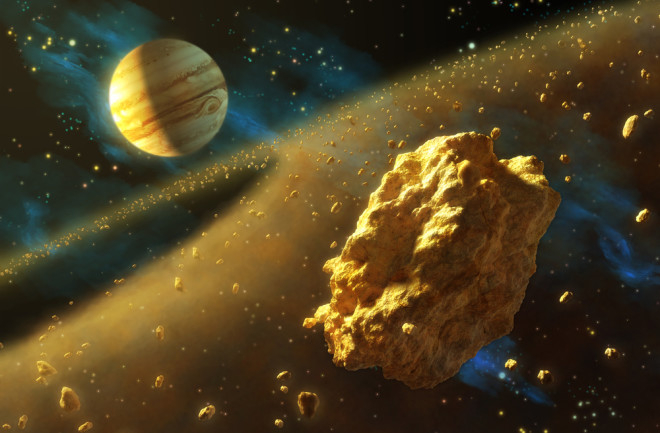Asteroid Belt Planet

In 1766 Prussian astronomer Johann Titius noticed that the distances of planets from the Sun seem to follow a mathematical pattern. This finding was popularized in 1772 by German astronomer Johann Bode and became known as Bode’s law. The rule was extremely accurate in predicting the separations between the six known planets—Mercury, Venus, Earth, Mars, Jupiter, and Saturn—as well as the expected existence of a planet between Mars and Jupiter. The quest for the planet beyond Mars was given a boost when Uranus was discovered in 1781 at a distance that was close to that expected for a seventh planet.
Giuseppe Piazzi, an Italian priest, discovered Ceres (today categorized as a dwarf planet) on January 1, 1801, at the predicted distance. The confirmation of Bode's law filled astronomers with joy, but three other objects—Pallas, Juno, and Vesta—were found in the Mars-Jupiter gap during the course of the following six years. It became obvious that these asteroids, as they were later known, were not planets as more of these bodies were found in the 19th century. What were they, though? The asteroids were believed to be the remains of a planet that disintegrated in a catastrophic cataclysm since Bode's equation predicted a planet but there were only minor fragments to be found. However, that idea has not held up. The entire mass of the asteroid belt is less than the Moon, and gravitational interactions with Jupiter would not allow a planet to form there. (Bode’s law hasn’t stood up too well, either. It didn’t predict Neptune or Pluto.)







